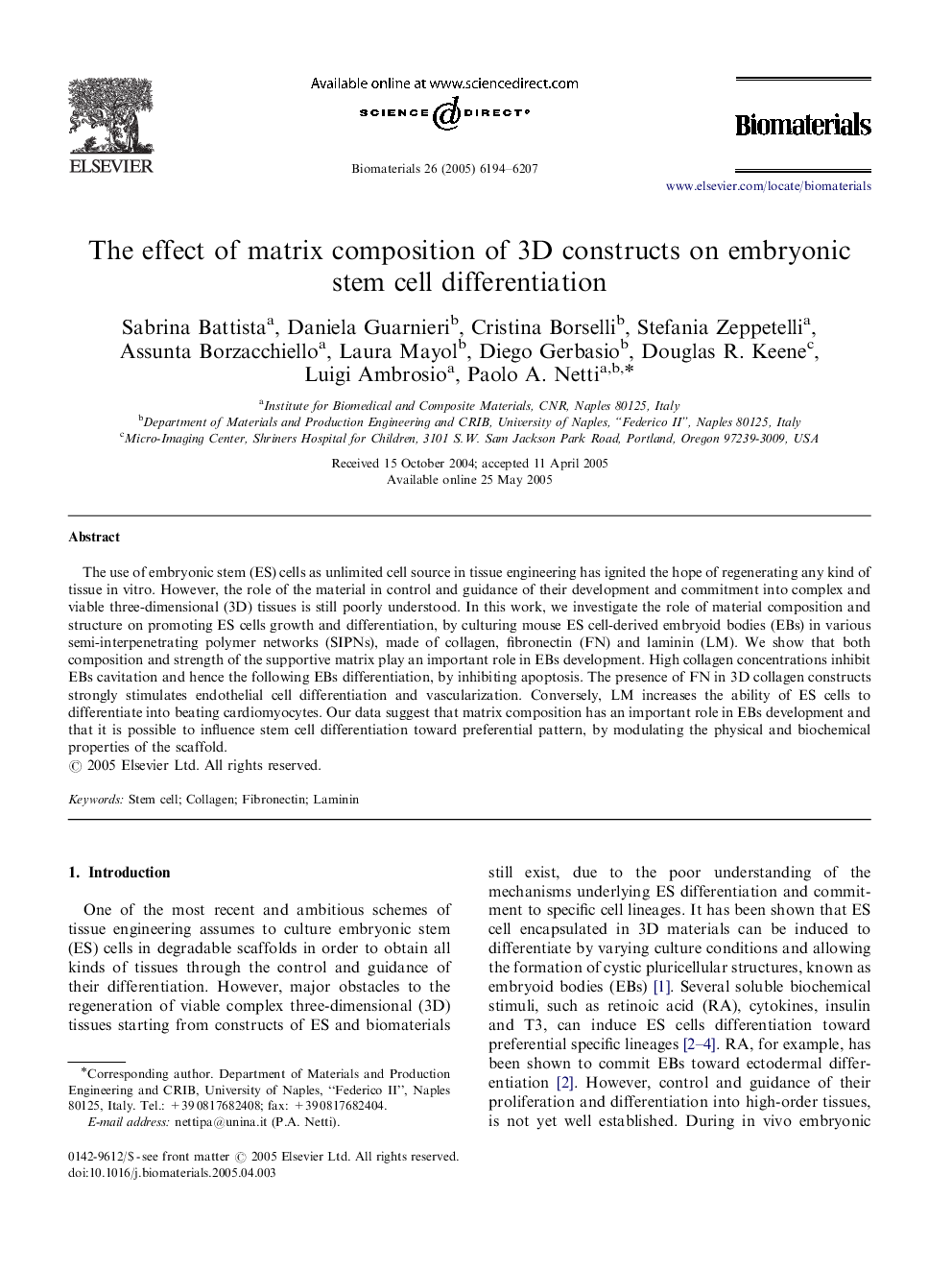| Article ID | Journal | Published Year | Pages | File Type |
|---|---|---|---|---|
| 11936 | Biomaterials | 2005 | 14 Pages |
The use of embryonic stem (ES) cells as unlimited cell source in tissue engineering has ignited the hope of regenerating any kind of tissue in vitro. However, the role of the material in control and guidance of their development and commitment into complex and viable three-dimensional (3D) tissues is still poorly understood. In this work, we investigate the role of material composition and structure on promoting ES cells growth and differentiation, by culturing mouse ES cell-derived embryoid bodies (EBs) in various semi-interpenetrating polymer networks (SIPNs), made of collagen, fibronectin (FN) and laminin (LM). We show that both composition and strength of the supportive matrix play an important role in EBs development. High collagen concentrations inhibit EBs cavitation and hence the following EBs differentiation, by inhibiting apoptosis. The presence of FN in 3D collagen constructs strongly stimulates endothelial cell differentiation and vascularization. Conversely, LM increases the ability of ES cells to differentiate into beating cardiomyocytes. Our data suggest that matrix composition has an important role in EBs development and that it is possible to influence stem cell differentiation toward preferential pattern, by modulating the physical and biochemical properties of the scaffold.
